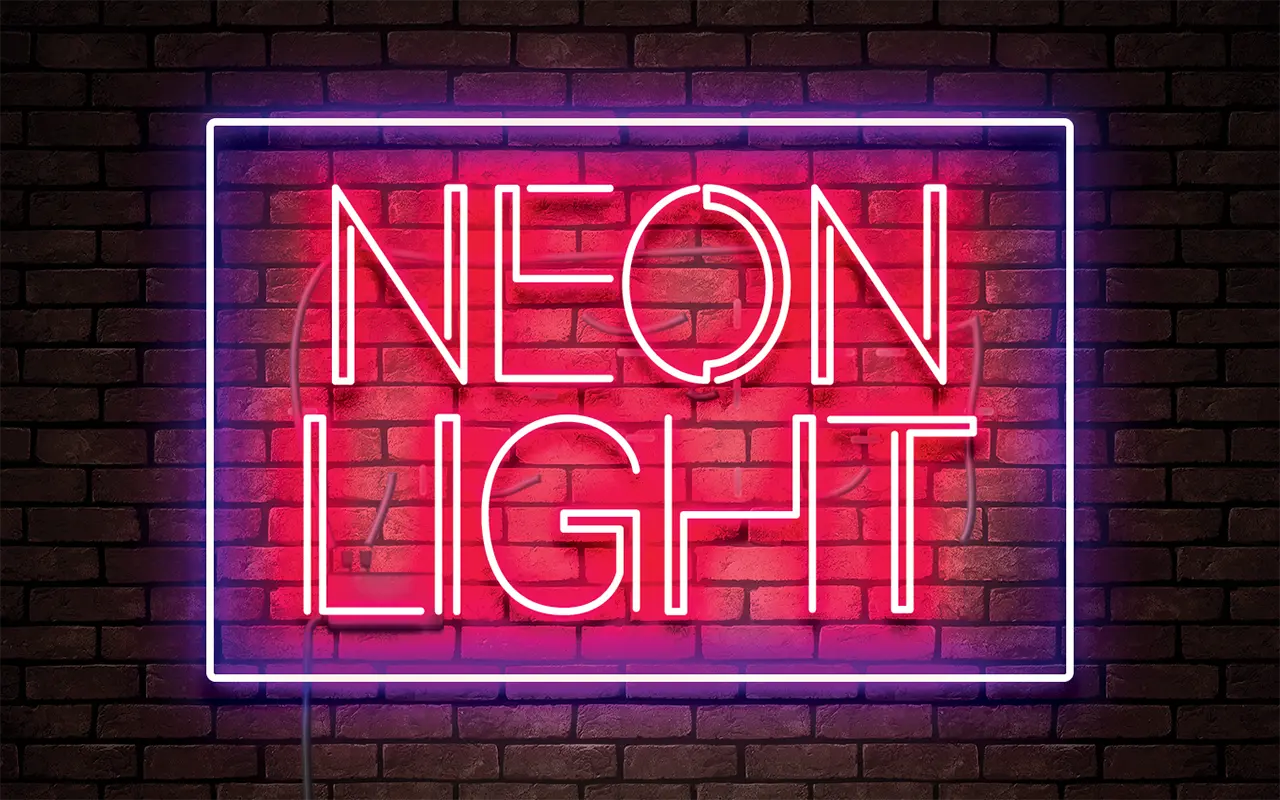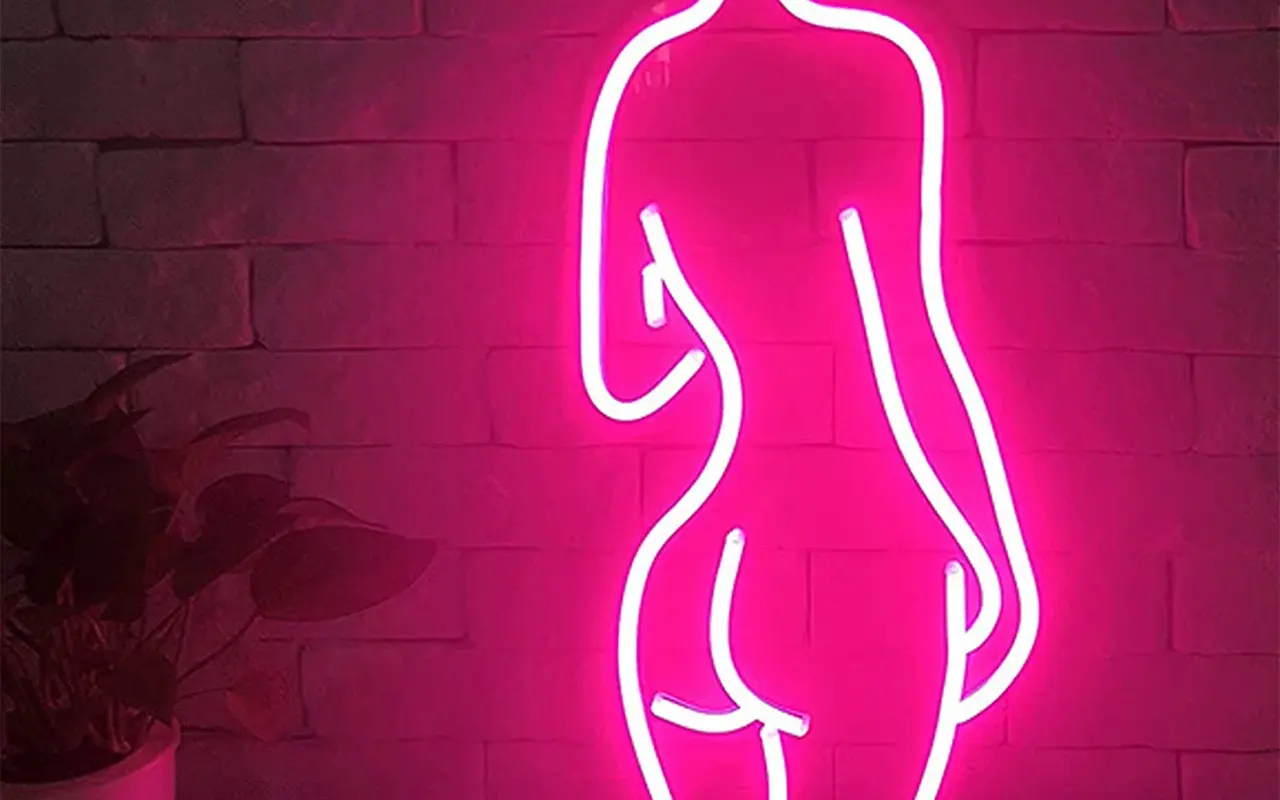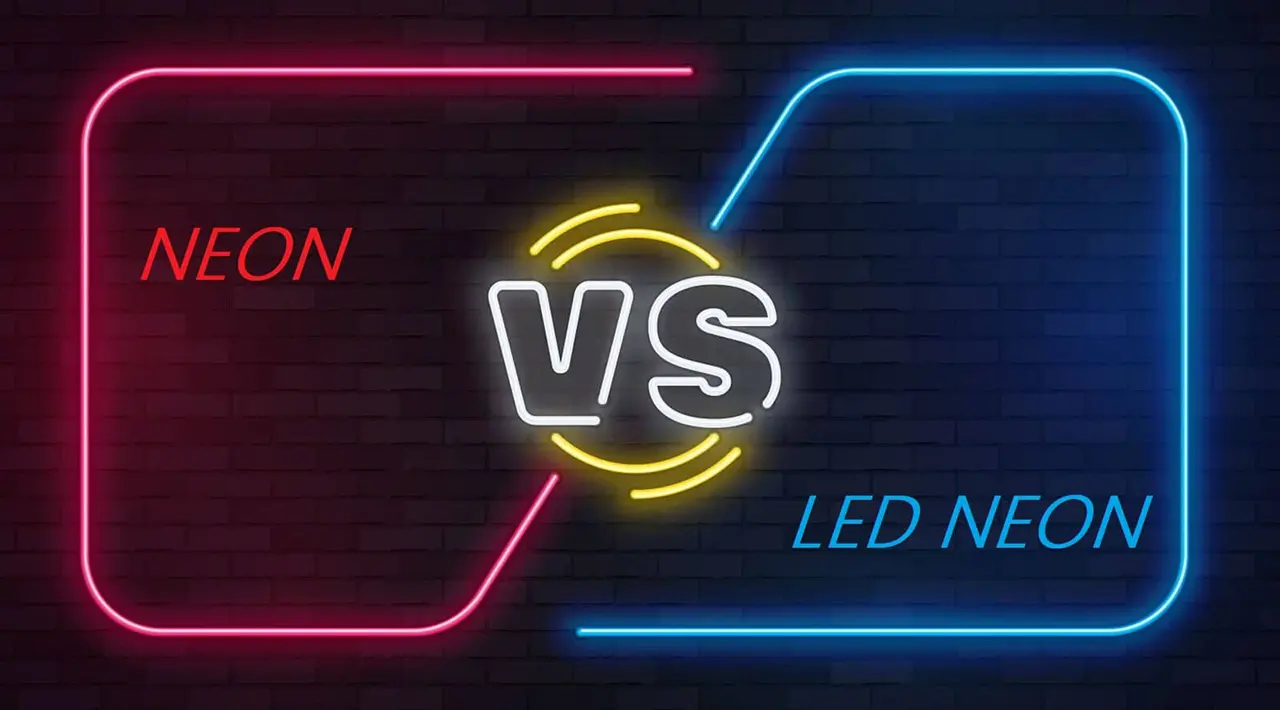Neon, often celebrated for its flashy presence in nighttime skylines and popular culture, holds much more than meets the eye. Beyond neon lights, this gaseous element boasts a rich scientific history and a plethora of practical applications. Intrigued? As we embark on this radiant journey to explore “facts about neon” and uncover “neon interesting facts,” we’ll dive deep into its captivating blend of science, history, and art.
Why should neon matter to you? It’s all about the fascinating interplay between its bright past, its impactful present, and its luminous future. This article is crafted to offer a well-rounded view, shedding gleaming clarity on neon’s intriguing story. Join us as we illuminate the many facets of this glowing marvel.
What is Neon? Unveiling the Basics
Definition and Characteristics of Neon
Let’s start with the basics. Neon, with the symbol Ne and atomic number 10, is a chemical element that belongs to the noble gas family in the periodic table. At room temperature, it’s an odorless and colorless gas that doesn’t readily form compounds with other elements. Pretty inert, right? But here’s where the magic happens: pass an electric current through it, and it transforms into an arresting spectacle of light. This dichotomy between neon’s mundane physical state and its electrifying luminescence fascinates scientists and artists alike.
Neon’s unique properties have carved out an indispensable niche in industries ranging from large-scale advertising to intricate scientific instrumentation. For example, its low boiling and melting points make it invaluable in cryogenic applications. So while you might initially associate neon with flashy billboards, its utility extends into realms as diverse as aerospace and health care.
Neon’s Place in the Periodic Table
When we look at the periodic table, neon is in good company, nestled among noble gases like helium, argon, and krypton. These elements are termed ‘noble’ because they’re notoriously aloof, chemically speaking; they don’t readily react with other elements. Neon is particularly scarce on our planet. Despite its relative abundance in the universe, it makes up a minuscule 0.0018% of Earth’s atmosphere. This rarity adds a layer of intrigue and drives its value as a visual spectacle and a resource in specialized scientific applications.
You might wonder, “Why is neon so rare?” The reason is primarily geological; it’s not readily trapped in Earth’s crust and often escapes into the atmosphere, which is challenging to extract. This limitation makes neon a precious asset in numerous industries, including scientific research, medicine, and decorative lighting.
A Dive Into the History Fact About Neon
Discovery of Neon
Imagine it’s the late 19th century, and you’re knee-deep in the pursuit of unraveling the mysteries of the elements. That was precisely the world in which Sir William Ramsay and Morris M. Travers found themselves. While engaged in the fractional distillation of liquid air, a process as laborious as it sounds, they isolated a gas that refused to react with other elements. Intrigued, they probed further and were rewarded with a brilliant glow. The year was 1898, and neon had just been discovered. Named from the Greek word’ neos,’ meaning new, neon made a vivid entry into the scientific realm.
Milestones in Neon History
Fast-forward to 1910, Paris—the fashion and design capital of the world and, as it turns out, a pivotal point in neon history. Georges Claude, a French engineer and inventor, grabbed the spotlight at the Paris Motor Show with the first-ever neon sign. It wasn’t just an advertisement but a spectacle that heralded a new era in visual marketing. Businesses realized the power of this glowing phenomenon. A sign no longer just conveyed information; it could now also capture the imagination. This landmark moment shaped advertising and visual culture for the years that followed.
How Neon Changed the World
The adoption of neon continued beyond the borders of France. The glow of neon lights soon caught fire, in a figurative sense, altering cityscapes from New York’s Times Square to Tokyo’s Shibuya district. What started as an advertising tool morphed into a cultural identifier. Neon changed the aesthetics of cities and became a powerful form of visual communication. Whether illuminating the facades of classic theaters or decorating contemporary art installations, neon lights memorably transformed urban and cultural landscapes.
The Science Behind Neon’s Glow
Neon Gas Excitation
So, how does neon create that mesmerizing glow? It’s all about the science of excitation. When an electric current flows through a sealed tube of neon gas, it excites the neon atoms. The atoms then release this energy as light photons, creating a mesmerizing, almost hypnotic, reddish-orange glow. This glow isn’t just for show; it’s the manifestation of neon atoms returning to their normal state after excitation.
The Color Spectrum of Neon
You might have seen neon lights in a dizzying array of colors and thought, “Well, neon can be any color.” Not exactly. Authentic neon lights emit only a reddish-orange light. When you see neon lights in different colors, they’re often filled with other noble gases like argon, krypton, or xenon, or they feature phosphor coatings that alter the color. The term’ neon lights’ has become a catch-all term, but purists know that real neon glows only in that classic reddish-orange hue.
Safety and Hazards
While neon is often considered safe due to its inert qualities, it’s essential to remember that it’s still a gas under pressure. Like any compressed gas, it poses asphyxiation risks if improperly handled. In high concentrations, neon can displace air and deplete oxygen levels in confined spaces, potentially leading to life-threatening situations. Therefore, whether you’re a hobbyist working on a DIY project or a professional in the field, handling neon requires a level of care and awareness to mitigate risks.
Peculiar Facts and Myths about Neon
Interesting Facts About Neon That Will Blow Your Mind
Hold onto your hats, science enthusiasts and curious minds alike, because neon is full of surprises. Did you know that this unassuming gas has 40 times the refrigerating capacity of liquid helium? That’s right—neon isn’t just about flashy signs; it’s a heavy-hitter in cryogenic applications, cooling down superconductors and other essential scientific instruments. And what about its role in high-voltage indicators? Thanks to its highly visible glow, neon serves as a silent yet powerful alert system in high-voltage equipment, protecting both machinery and operators from potential harm.
Debunking Neon Myths
It’s time to break free from stereotypes. If you thought neon was the exclusive domain of retro diners and Las Vegas casinos, think again. Neon has been flying above our heads for years—literally. In aircraft, as a component in lightning arresters, neon helps secure safe flights by diverting electrical surges away from vital equipment. Additionally, neon’s ability to withstand harsh weather conditions makes it ideal for outdoor, weather-resistant signage, not just the flashy ones we’re used to seeing. Let’s retire the notion that neon is purely for aesthetics; its functionality runs far deeper.
How Is Neon Used? From Practical to Extraordinary
Everyday Uses of Neon
We interact with neon more than we realize. You’d be surprised to learn that the television you’re watching may contain neon in its vacuum tubes. This versatile element is more than just a pretty face; it serves us in practical ways that often go unnoticed. For example, in the medical industry, neon is used as a component in lung diffusion tests and even as a cryogenic refrigerant in certain applications. But it doesn’t stop there. As a crucial element in plasma displays and lasers, neon often plays an unsung role in technologies that form the backbone of our daily lives.
Neon in Art and Entertainment
Ah, neon—the eternal muse for artists and entertainers. If you’ve ever been to Coachella or admired Ridley Scott’s ‘Blade Runner,’ you’ve witnessed neon’s impact on art and entertainment. Its vivid hues and captivating light have made it a go-to for modern artists, concert organizers, and filmmakers, adding an iridescent layer to creative landscapes. For decades, neon has danced in our music videos, shone in our art installations, and dazzled in our favorite sci-fi epics. Its allure transcends generations and continues to etch its radiant footprint onto pop culture.
Economics of Neon
The Cost of Neon
When we talk about neon’s financial aspects, it’s essential to consider the element’s rarity on Earth. Accounting for a mere 0.0018% of the Earth’s atmosphere, neon becomes significantly more expensive to extract and refine compared to other elements like helium. Consequently, its scarcity often tags it as a luxury item, especially in specialized scientific applications. For example, the high cost of neon relegates its use in quantum computing and advanced cryogenics to well-funded research institutions or large corporations. Understanding neon’s economic intricacies can offer insight into why it’s sometimes saved for high-stakes applications.
Where to Buy Neon Products
Whether you’re in the market for avant-garde art installations or utilitarian neon signage, specialized stores and reputable online platforms have covered you. Trusted websites often offer customization options, making it easier for businesses to adapt neon to their specific branding needs. For scientific applications, specialized vendors and chemical supply companies provide various grades of neon gas, typically sealed in high-pressure cylinders. The key here is to choose a provider who sells the product and offers comprehensive after-sales support, given Neon’s handling requirements.
Neon Across Cultures and Eras
Neon in Pop Culture
The neon light’s vivid hues have carved out a dynamic role in pop culture, extending far beyond scientific labs and advertising billboards. The influence of neon can be readily seen in cultural phenomena like ‘Miami Vice,’ where it defined an entire aesthetic. Its fluorescent glow has also deeply impacted the cyberpunk genre, illuminating the dystopian futures depicted in movies, video games, and literature. These iconic instances have made neon a symbolic representation of specific cultural epochs, capturing both the spirit and visual language of various eras.
Historical and Traditional Uses of Neon
While it’s easy to think of neon as a 20th-century marvel, its roots trace back further. Scientists used neon in early electrical experiments, investigating its conductive properties and exploring its potential in emerging technologies. Meanwhile, in the realm of visual arts, although neon as we know it didn’t exist, artists used materials mimicking its luminosity, like bioluminescent pigments, to create visually stunning pieces. Tracing neon’s journey from the labs of yesteryears to the modern installations of today offers an enriching perspective on how this element transcends time and application.
FAQs about Neon
Is Neon Dangerous?
While neon is a generally safe, inert gas, its properties make it an asphyxiant in certain conditions. Suppose you’re in a space where the concentration of neon gas is unusually high. In that case, the risk comes from the gas’s ability to displace oxygen. In such situations, suffocation can occur. Therefore, when using neon—especially in confined, poorly ventilated spaces—it’s critical to follow standard safety guidelines. Monitoring devices that track oxygen levels can be invaluable in these settings. The takeaway is that neon is not dangerous but that its improper use or handling could potentially lead to safety risks. Suppose you’re a professional working with neon or a DIY enthusiast. In that case, understanding the safety protocols can keep you, and those around you, safe.
Why is Neon so Expensive?
Neon’s high cost is primarily due to its rarity and the complex processes required for its extraction. This noble gas is anything but common, constituting just about 0.0018% of the Earth’s atmosphere. It’s typically collected through the fractional distillation of liquefied air. This process is not only complicated but also resource-intensive. Add to this the fact that neon doesn’t have many substitutes in its most critical applications—like high-voltage indicators—and you have a resource that’s as expensive as it is indispensable.
Can Neon Colors Be Replicated?
Contrary to popular belief, authentic neon lights glow only in a reddish-orange hue. However, that’s not to say you can’t achieve a broad spectrum of colors. This is done using other noble gases like argon, krypton, and xenon or phosphor coatings on the inside of the glass tubes. Combining these techniques, a wide range of glowing colors can be achieved, from bright blues to vivid greens.
What Are Some Unique Uses of Neon?
Beyond the bright and attractive signage that often comes to mind, neon’s applications are incredibly versatile. For example, neon is used in high-voltage indicators and vacuum tube technology. Its liquid form has refrigerating capacities that are 40 times more powerful than liquid helium, making it essential in specific scientific applications.
What’s the Significance of Neon in Pop Culture?
Neon has long been intertwined with pop culture, helping to define the visual aesthetics of various eras. Think about the neon-soaked sceneries in movies like ‘Blade Runner’ or the colorful installations in festivals like Coachella. Neon brings life to the cyberpunk worlds, adds vibrancy to fashion trends, and even finds its way into contemporary art.
Is Neon Eco-Friendly?
Being an inert gas, neon doesn’t contribute to air pollution or global warming. However, the energy used to light a neon sign can have environmental impacts depending on the source of that electricity. Switching to energy-efficient power sources can make your neon usage more eco-friendly.
How Do I Purchase Neon Signs or Products?
Your best bet for purchasing neon products would be specialized stores focusing on lighting solutions or artistic installations. Online platforms also offer a plethora of choices. Remember, the quality and price can vary widely, so it’s crucial to do your research.
Can Neon Be Used in Medical Applications?
Yes, neon has found applications in the medical field, particularly in cryogenic freezing methods and certain laser technologies. Its unique properties make it a resource in niche medical procedures and diagnostic techniques.
How Did Neon Change the World of Advertising?
The introduction of neon signage in the early 20th century revolutionized advertising. The first neon sign, showcased at the 1910 Paris Motor Show, caught immediate attention and soon became a mainstay in outdoor advertising, offering a new way to capture consumer interest.
What’s the History of Neon?
Though discovered in 1898 by Sir William Ramsay and Morris M. Travers, neon only took the spotlight once its commercial applications were realized. It has undergone several transformations and innovations since its discovery, embedding itself in both scientific endeavors and visual arts.
Conclusion
As we bring this comprehensive guide on neon to a close, it’s apparent that this element extends far beyond its eye-catching luminosity. Neon serves as a cornerstone in various industries—whether in the dazzling displays of Vegas or the ultra-precise environments of quantum computing labs. Its rich history, marked by scientific breakthroughs and cultural influences, underscores its persistent allure and indispensable role in modern society. Whether entranced by its vibrant hues in contemporary art or intrigued by its practical applications, neon’s versatile nature guarantees it will continue to captivate and serve humanity in novel ways for years.
The future is as bright as the lights themselves in the fascinating neon world. If you want to bring that luminous magic into your life, look no further than Unitop—China’s leading LED strip lights and LED neon flex manufacturer. With unparalleled expertise in the LED industry, Unitop is your go-to source for quality and innovation. Do you have questions or specific requirements? Don’t hesitate to reach out to us immediately. Your brighter future awaits with Unitop.
Related Articles

Tom is now the Sales Manager of Unitop (China) Co., Limited. He has been in the LED Lighting industry ever since 2005. He is an expert in sales & marketing, and factory management. He likes bodybuilding, and he is also a crazy Apple Fan! He is a hard-working guy and loves to learn and try new things.
Email: tom@unitopledstrip.com WhatsApp: +86-18680307140







اترك رداً
تريد المشاركة في هذا النقاششارك إن أردت
Feel free to contribute!